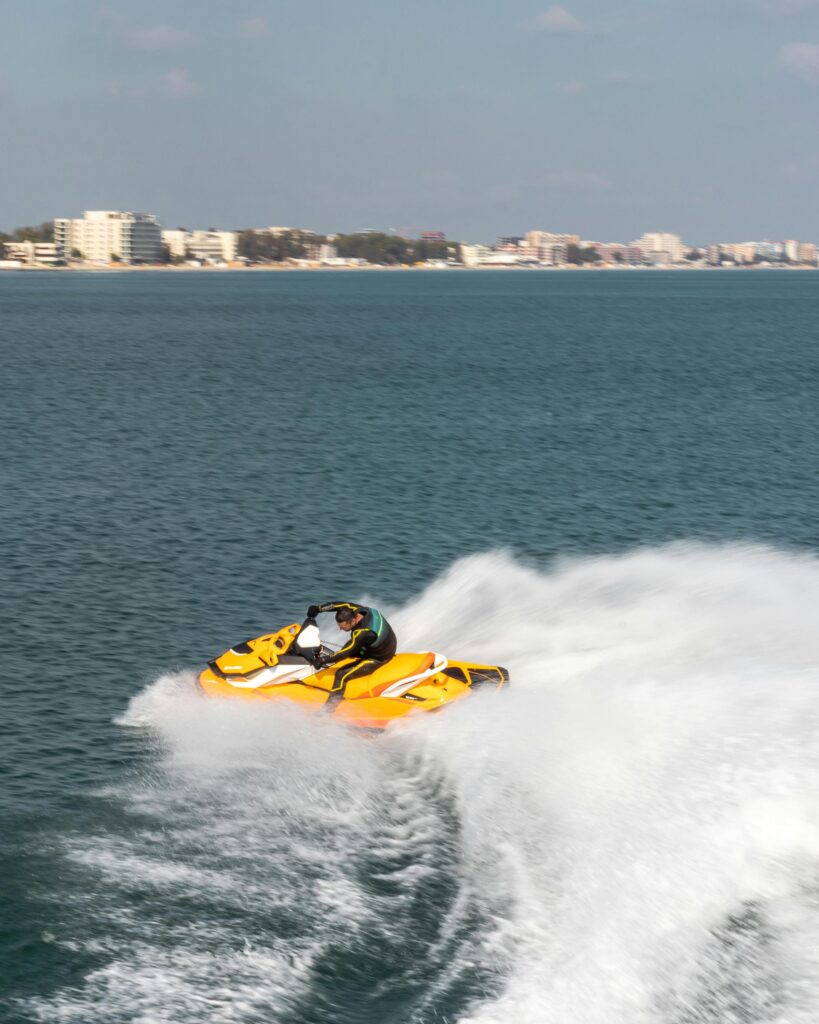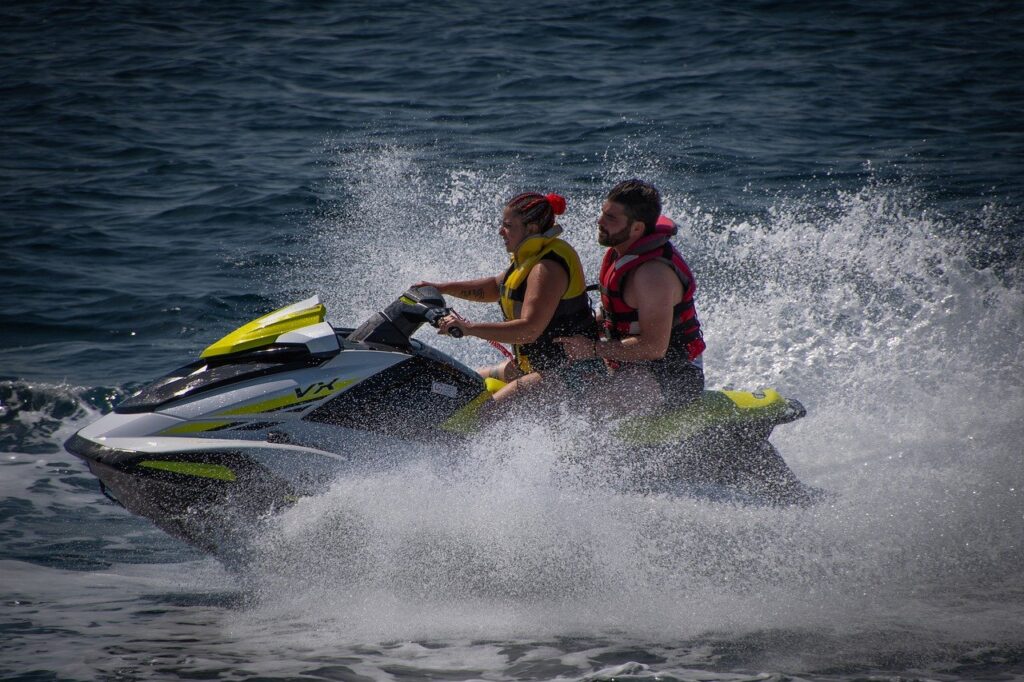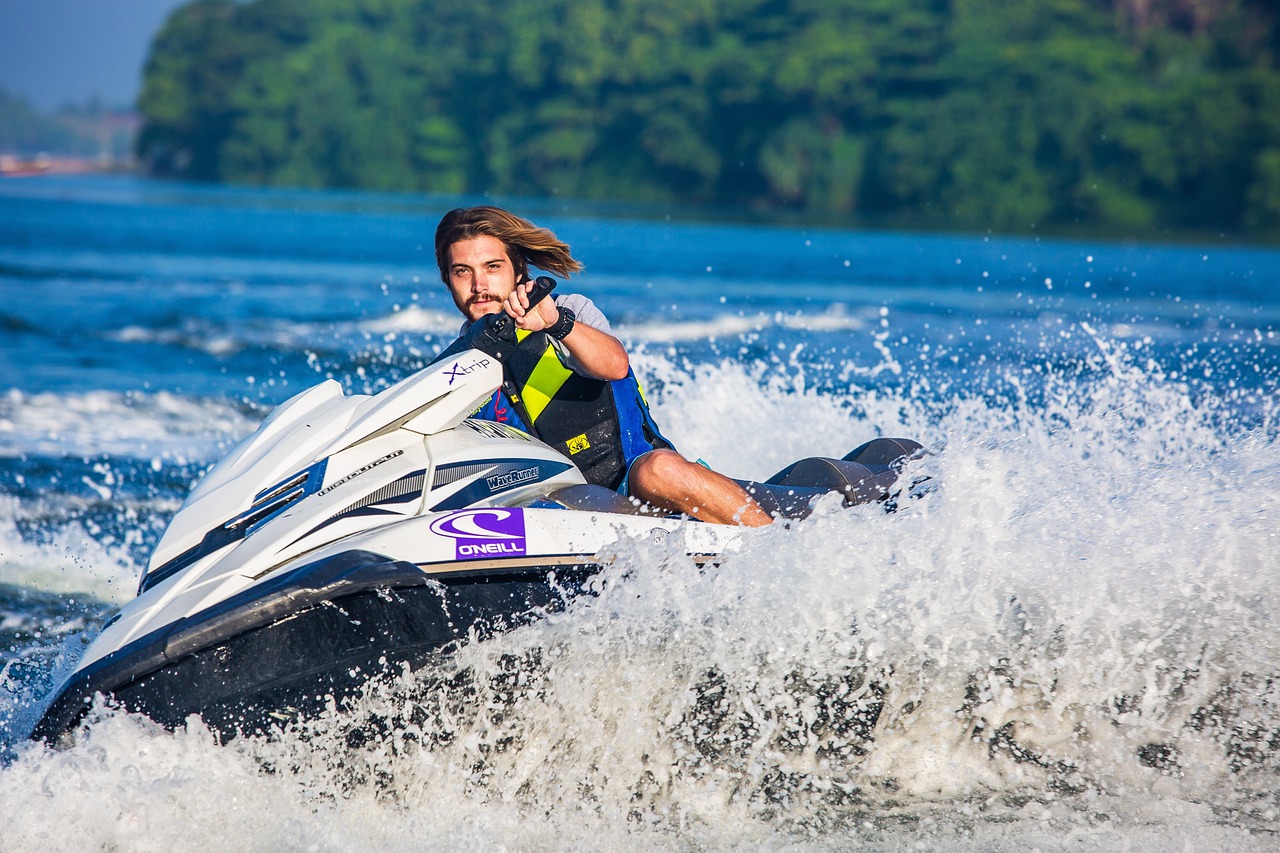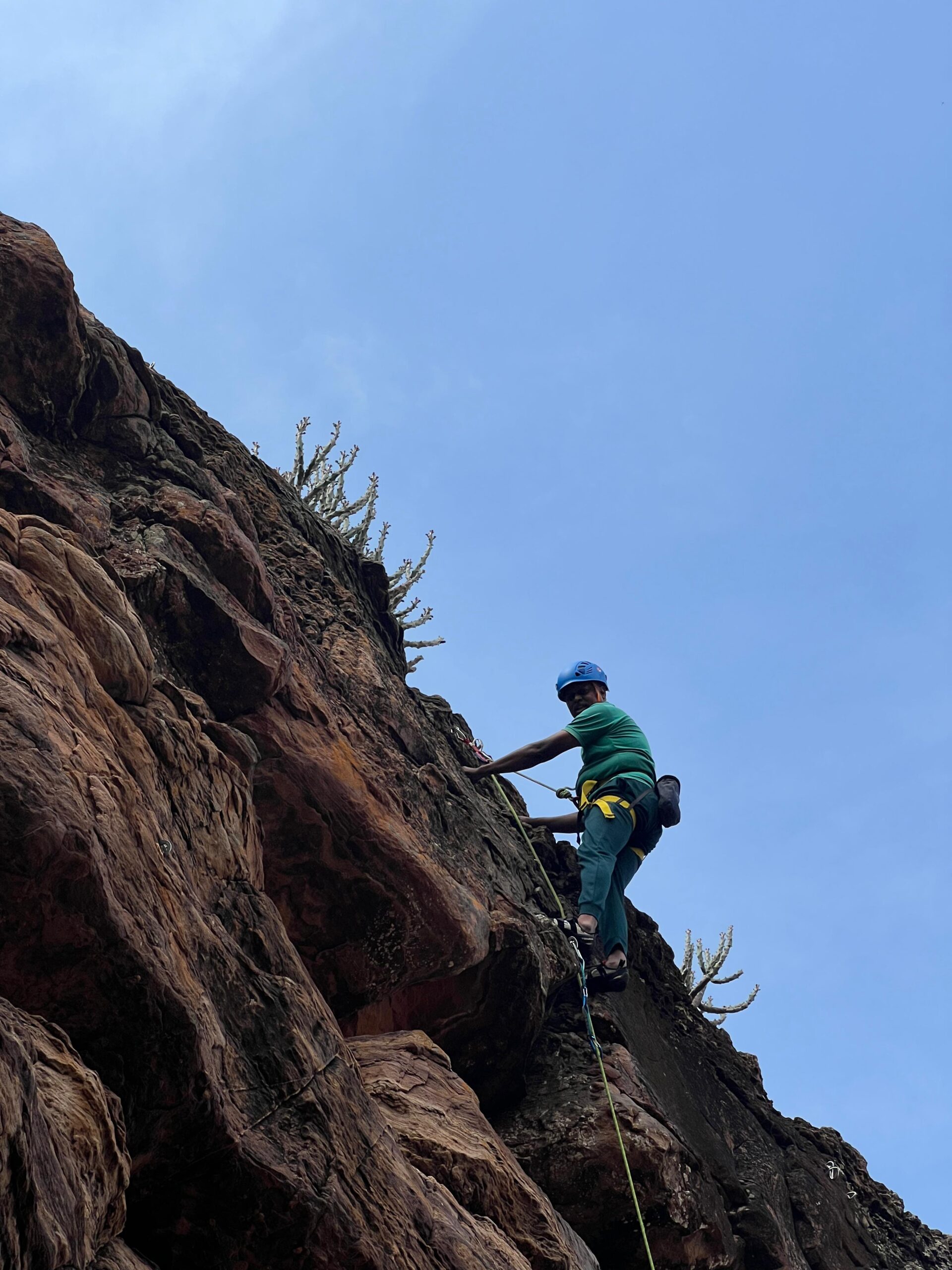The Thrill of Jet Skiing: An Exciting Water Adventure
Jet skiing is one of the most exhilarating water sports that offer both a rush of adrenaline and the chance to enjoy the beauty of the open water. Whether you’re a first-timer or a seasoned rider, jet skiing offers an unforgettable experience that combines speed, skill, and the freedom of the open water.
What is Jet Skiing?
Jet skiing, also known as personal watercraft (PWC) riding, involves riding a small, motorized craft that skims across the surface of the water. Powered by a jet propulsion engine, jet skis can reach speeds of up to 65 mph or more, depending on the model and conditions. Unlike traditional boats, jet skis are designed for one or two people, making them a fun and flexible way to explore lakes, rivers, and oceans.
Why Jet Skiing is So Popular
- Adrenaline Rush: For those seeking an adrenaline-fueled experience, jet skiing is the perfect choice. The sensation of speeding across the water with the wind in your hair is truly unmatched. Riders can make sharp turns, ride over waves, or perform tricks, creating an exciting and dynamic experience.
- Easy to Learn: Unlike some water sports, jet skiing is relatively easy to pick up. Most people can start enjoying it after just a short lesson on the basics, such as throttle control and steering. With a little practice, you’ll quickly become more confident in handling the craft.
- Scenic Adventure: Jet skiing allows you to explore areas that might be difficult to access by boat or on foot. Whether you’re cruising along the coastline, exploring a secluded bay, or just enjoying the open water, the scenic views and the freedom of the water make it an unforgettable experience.
- Social Fun: Jet skiing is not just about individual thrills—it’s also a social activity. Many people enjoy riding with friends and family, and some resorts even offer jet ski tours for groups, allowing you to experience the fun together.
Tips for a Safe and Enjoyable Ride
While jet skiing is exciting, it’s important to stay safe. Here are some tips to ensure a smooth and enjoyable ride:
- Wear a Life Jacket: Always wear a life jacket, even if you’re an experienced swimmer. It’s an essential safety measure.
- Stay Aware of Your Surroundings: Keep an eye out for other watercraft, swimmers, and obstacles in the water to avoid collisions.
- Follow Local Regulations: Different areas have specific rules for jet skiing, including speed limits and designated zones. Always follow these rules to ensure a safe and legal ride.
- Practice Balance and Steering: When you’re starting out, take your time to learn how to balance and steer the jet ski properly. This will help you navigate more safely and enjoy the ride.
- Respect the Environment: Avoid riding too close to shorelines, wildlife, or protected areas. Be mindful of your impact on the environment.

Conclusion
Jet skiing is a thrilling, fun, and versatile water sport that everyone can enjoy. Whether you’re looking to feel the wind in your hair as you race across the waves, explore new areas, or just enjoy a day on the water, jet skiing offers something for everyone. With a few safety precautions in mind, you’ll be ready to dive into the adventure and experience the excitement for yourself.
So, next time you’re near the water, why not hop on a jet ski and see what all the excitement is about?
Types of jet skiing
Jet skiing is an exciting water sport with various types of jet skis, each designed for different purposes. Here are the main types:
- Recreational Jet Skis: These are the most common and versatile jet skis, ideal for casual riders. They are designed for general fun, offering comfort, stability, and ease of use. Typically, they have a lower horsepower and are suitable for families or beginners.
- Sport Jet Skis: These are designed for more experienced riders who enjoy high-speed performance and agility. They are built for quick acceleration, sharp turns, and more intense maneuvers, making them perfect for racing and freestyle activities.
- Touring Jet Skis: These are built for long-distance cruising and are equipped with larger fuel tanks, more storage space, and a comfortable seat. Touring jet skis are ideal for those looking to explore vast areas or spend long hours on the water.
- Stand-Up Jet Skis: As the name suggests, these jet skis require the rider to stand up, offering a more challenging but exhilarating experience. They are smaller and lighter, primarily used for tricks and maneuvers in freestyle riding.
- Luxury Jet Skis: These are high-end models that combine performance with comfort and advanced features. They come with luxurious seating, larger engines, and a smoother ride, offering premium features for those looking for a more upscale experience.
- Fishing Jet Skis: Equipped with specialized attachments such as rod holders and storage for fishing gear, these jet skis are designed for anglers who want to combine water sports with fishing.
Each type of jet ski caters to different preferences, from leisurely rides to intense, adrenaline-pumping experiences.
Jet skiing wikipedia olympics
While jet skiing is not an Olympic sport, it plays a crucial role in water safety during Olympic events. At the Paris 2024 Olympics, jet skis were integral to the surfing competitions held at Teahupo’o, French Polynesia. A professional water safety team utilized jet skis to swiftly rescue surfers who encountered difficulties in the challenging waves, ensuring their safety and allowing them to continue competing.
Additionally, Sea-Doo, a leading personal watercraft manufacturer, provided 12 watercraft to support safety operations during the Paris 2024 Summer Games.
Beyond the Olympics, jet skiing has been featured in other international competitions. For instance, the 2023 Southeast Asian Games in Cambodia included jet ski events, marking its debut in the competition.
While jet skiing isn’t an Olympic sport, its role in ensuring safety during water-based events is indispensable.
For a visual insight into jet ski operations during the Olympics, you might find the following video informative:
Jet Ski price in India
Jet ski prices in India vary widely based on factors such as brand, model, engine capacity, and whether the unit is new or pre-owned. Here’s an overview of the pricing:
New Jet Skis:
- Kawasaki Jet Skis: Models like the Kawasaki Jet Ski Ultra 310LX are priced between ₹6.20 lakh and ₹6.50 lakh. Exporters India
- Yamaha Jet Skis: The Yamaha WaveRunner FX Limited SVHO is available for approximately ₹4 lakh to ₹5 lakh. Exporters India
- Electric Jet Skis: The Ewave Electric Jet Ski is priced at ₹1.45 lakh. Litmus Marine
Pre-Owned Jet Skis:
- 2018 Yamaha WaveRunner FX Cruiser SVHO: Available for around ₹1 lakh to ₹1.50 lakh. Exporters India
- 2019 Yamaha WaveRunner FX Limited SVHO: Priced between ₹4 lakh and ₹5 lakh. Exporters India
- 2014 FCA India Linea Classic M Jet Mid: Listed for ₹2.70 lakh on local marketplaces. Facebook
Please note that these prices are approximate and can vary based on the seller, location, and specific model features. It’s advisable to contact authorized dealers or reputable sellers directly for the most accurate and current pricing information.

Here are the top 5 jet skiing mistakes and how to avoid them:
1. Not Wearing a Life Jacket
Mistake: Failing to wear a life jacket is one of the most dangerous mistakes people make while jet skiing. Even experienced riders can end up in the water unexpectedly, and a life jacket can save lives. How to Avoid: Always wear a properly fitted life jacket that is designed for jet skiing. Check that it meets local safety regulations and is in good condition.
2. Failing to Check the Jet Ski’s Condition
Mistake: Not inspecting your jet ski before heading out can lead to mechanical issues, which can leave you stranded in the water. How to Avoid: Always check the fuel levels, the battery, the engine, and the propeller for any signs of damage before you go. Familiarize yourself with the basic maintenance and safety checks for your model.
3. Overloading the Jet Ski
Mistake: Carrying too many passengers or excessive gear can reduce your jet ski’s performance and stability, making it harder to control. How to Avoid: Always follow the manufacturer’s weight capacity limit. This includes considering the combined weight of passengers and any gear you’re bringing along.
4. Ignoring Local Regulations and Waterway Safety
Mistake: Ignoring speed limits, no-wake zones, and other local boating regulations can lead to accidents or legal issues. How to Avoid: Always research the area where you’ll be jet skiing, and adhere to all local regulations. Stay alert to signs and buoys marking no-wake zones, speed limits, and other important safety information.
5. Not Paying Attention to Weather Conditions
Mistake: Jet skiing in poor weather conditions, such as high winds, rough waves, or lightning, can be dangerous and cause accidents. How to Avoid: Check the weather forecast before heading out, and avoid jet skiing in bad weather. If conditions change while you’re on the water, head back to shore as soon as possible.
By avoiding these common mistakes, you can ensure a safer, more enjoyable jet skiing experience.


